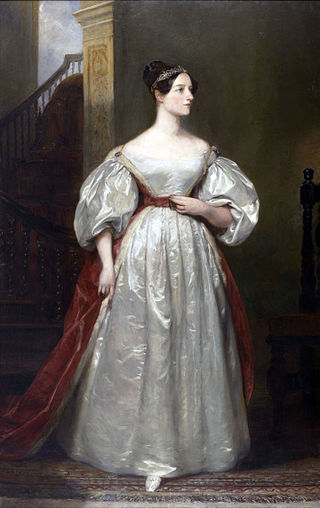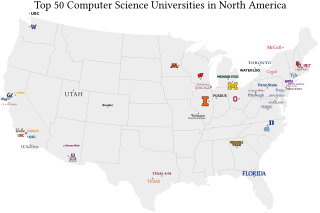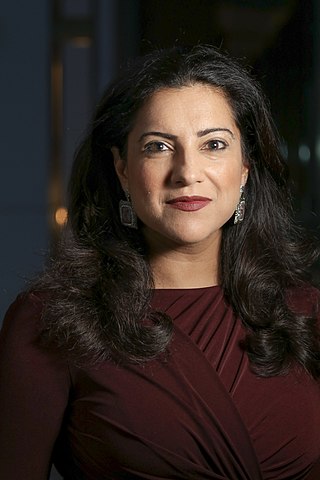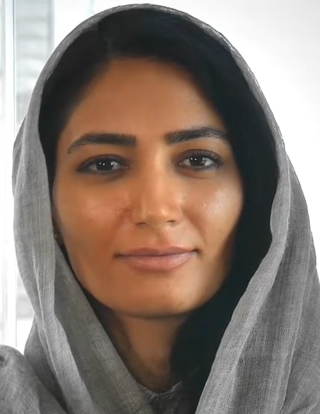
A hackathon is an event where people engage in rapid and collaborative engineering over a relatively short period of time such as 24 or 48 hours. They are often run using agile software development practices, such as sprint-like design wherein computer programmers and others involved in software development, including graphic designers, interface designers, product managers, project managers, domain experts, and others collaborate intensively on engineering projects, such as software engineering.

Women in computing were among the first programmers in the early 20th century, and contributed substantially to the industry. As technology and practices altered, the role of women as programmers has changed, and the recorded history of the field has downplayed their achievements. Since the 18th century, women have developed scientific computations, including Nicole-Reine Lepaute's prediction of Halley's Comet, and Maria Mitchell's computation of the motion of Venus.

The relationship between women and video games has received extensive academic and media attention. Since the 1990s, female gamers have commonly been regarded as a minority. However, industry surveys have shown that over time, the gender ratio has become closer to equal. Beginning mainly in the 2010s, women have been found to make up around half of all gamers. The gender ratio differs significantly between game genres, and women are highly underrepresented in genres such as first-person shooters and grand strategy games. Sexism in video gaming, including sexual harassment, as well as underrepresentation of women as characters in games, is an increasing topic of discussion in video game culture.

Science, technology, engineering, and mathematics (STEM) is an umbrella term used to group together the distinct but related technical disciplines of science, technology, engineering, and mathematics. The term is typically used in the context of education policy or curriculum choices in schools. It has implications for workforce development, national security concerns, and immigration policy, with regard to admitting foreign students and tech workers.

Computer science education or computing education is the field of teaching and learning the discipline of computer science, and computational thinking. The field of computer science education encompasses a wide range of topics, from basic programming skills to advanced algorithm design and data analysis. It is a rapidly growing field that is essential to preparing students for careers in the technology industry and other fields that require computational skills.

Reshma Saujani is an American lawyer, politician, civil servant, and the founder of the nonprofit organization "Girls Who Code", which aims to increase the number of women in computer science and close the gender employment difference in that field. She worked in city government as a deputy public advocate at the New York City Public Advocate's office. In 2009, Saujani ran against Carolyn Maloney for the U.S. House of Representatives seat from New York's 14th congressional district, becoming the first Indian-American woman to run for Congress. In 2013, she ran as a Democratic candidate for Public Advocate, coming third in the primary. Following the 2012 founding of Girls Who Code, Saujani was listed in Fortune’s 40 Under 40 list.

The College of Engineering and Physical Sciences (CEPS), is one of seven faculties – referred to as “colleges” – at the University of Guelph in Ontario, Canada. CEPS operates on the University of Guelph main campus, one of four across Ontario, and has one of the largest faculty, staff, and student populations of the seven colleges at U of G.

Women are often under-represented in the academic and professional fields of engineering; however, many women have contributed to the diverse fields of engineering historically and currently. A number of organizations and programs have been created to understand and overcome this tradition of gender disparity. Some have decried this gender gap, saying that it indicates the absence of potential talent. Though the gender gap as a whole is narrowing, there is still a growing gap with minority women compared to their white counterparts. Gender stereotypes, low rates of female engineering students, and engineering culture are factors that contribute to the current situation where men dominate in fields relating to engineering sciences.

Many scholars and policymakers have noted that the fields of science, technology, engineering, and mathematics (STEM) have remained predominantly male with historically low participation among women since the origins of these fields in the 18th century during the Age of Enlightenment.

Code.org is a non-profit organization and educational website founded by Hadi and Ali Partovi aimed at K-12 students that specializes in computer science. The website includes free coding lessons and other resources. The initiative also targets schools in an attempt to encourage them to include more computer science classes in the curriculum. On December 9, 2013, they launched the Hour of Code nationwide to promote computer science during Computer Science Education Week through December 15, 2013.

Kimberly Bryant is an American electrical engineer who worked in the biotechnology field at Genentech, Novartis Vaccines, Diagnostics, and Merck. In 2011, Bryant founded Black Girls Code, a nonprofit organization that focuses on providing technology and computer programming education to African-American girls. After founding Black Girls Code, Bryant was listed as one of the "25 Most Influential African-Americans In Technology" by Business Insider.
Made with Code is an initiative launched by Google on 19 July 2014. Google aimed to empower young women in middle and high schools with computer programming skills. Made with Code was created after Google's own research found out that encouragement and exposure are the critical factors that would influence young females to pursue computer science. It was reported that Google is funding $50 million to Made with Code, on top of the initial $40 million invested since 2010 in organizations like Code.org, Black Girls Code, and Girls Who Code. The Made with Code initiative involves both online activities as well as real life events, collaborating with notable firms like Shapeways and App Inventor.
CODE: Debugging the Gender Gap is a 2015 documentary by Robin Hauser Reynolds. It focuses on the lack of women and minorities in the field of software engineering. It premiered on April 19, 2015 at the Tribeca Film Festival in New York. The film focuses on inspiring young girls to pursue careers in computer science by profiling successful women in computer programming, such as, Danielle Feinberg of Pixar, Aliya Rahman of Code for Progress, and Julie Ann Horvath. By profiling and displaying the careers of these women, the film makers hope to show that computer science can be creative, lucrative, and rewarding.

Diversity in computing refers to the representation and inclusion of underrepresented groups, such as women, people of color, individuals with disabilities, and LGBTQ+ individuals, in the field of computing. The computing sector, like other STEM fields, lacks diversity in the United States.
LeanIn.Org is a 501(c)(3) nonprofit organization founded by then present Chief Operating Officer of Meta Platforms Sheryl Sandberg in 2013 dedicated "to offering women the ongoing inspiration and support to help them achieve their goals." The organization desires to support women in three main ways: community, education, and circles, or small, coordinated peer groups that meet to share their experiences and learn together. Launched after the release of Sandberg's bestselling book, Lean In: Women, Work, and the Will to Lead, the organization views itself as the next step in an effort to change "the conversation from what we can’t do to what we can do." Since its launch, over 380,000 women and men have joined the Lean In community, creating 34,000 Lean In Circles in over 157 countries to date.

Gender disparity in computing concerns the disparity between the number of men in the field of computing in relation to the lack of women in the field. Originally, computing was seen as a female occupation. As the field evolved, so too did the demographics, and the gender gap shifted from female dominated to male dominated. The believed need for more diversity and an equal gender gap has led to public policy debates regarding gender equality. Many organizations have sought to create initiatives to bring more women into the field of computing.

Fereshteh Forough is an Afghan social activist and the CEO and founder of Code to Inspire (CTI), the first coding school for girls in Afghanistan. She is an advocate for gender equality and the empowerment of women in developing countries through digital literacy, education, and financial independence.
Gender digital divide is defined as gender biases coded into technology products, technology sector, and digital skills education. It can refer to women's lack of access to, use of, and professional development in computing work. The gender digital divide has changed throughout history due to social roles, economics, and educational opportunities.
Naia Butler-Craig is a science communicator and an American aerospace engineer.
According to the National Science Foundation (NSF), women and racial minorities are underrepresented in science, technology, engineering, and mathematics (STEM). Scholars, governments, and scientific organizations from around the world have noted a variety of explanations contributing to this lack of racial diversity, including higher levels of discrimination, implicit bias, microaggressions, chilly climate, lack of role models and mentors, and less academic preparation.















